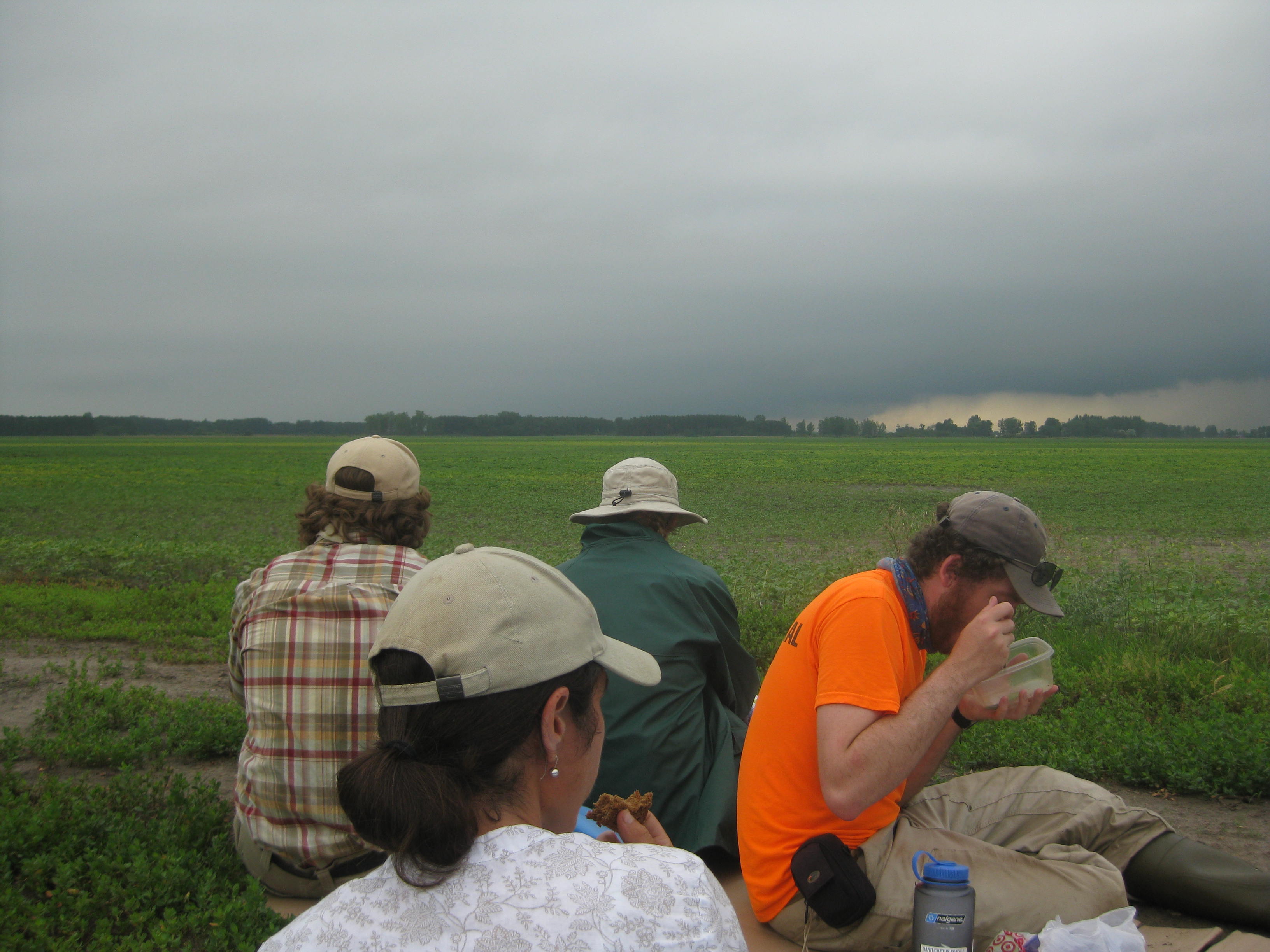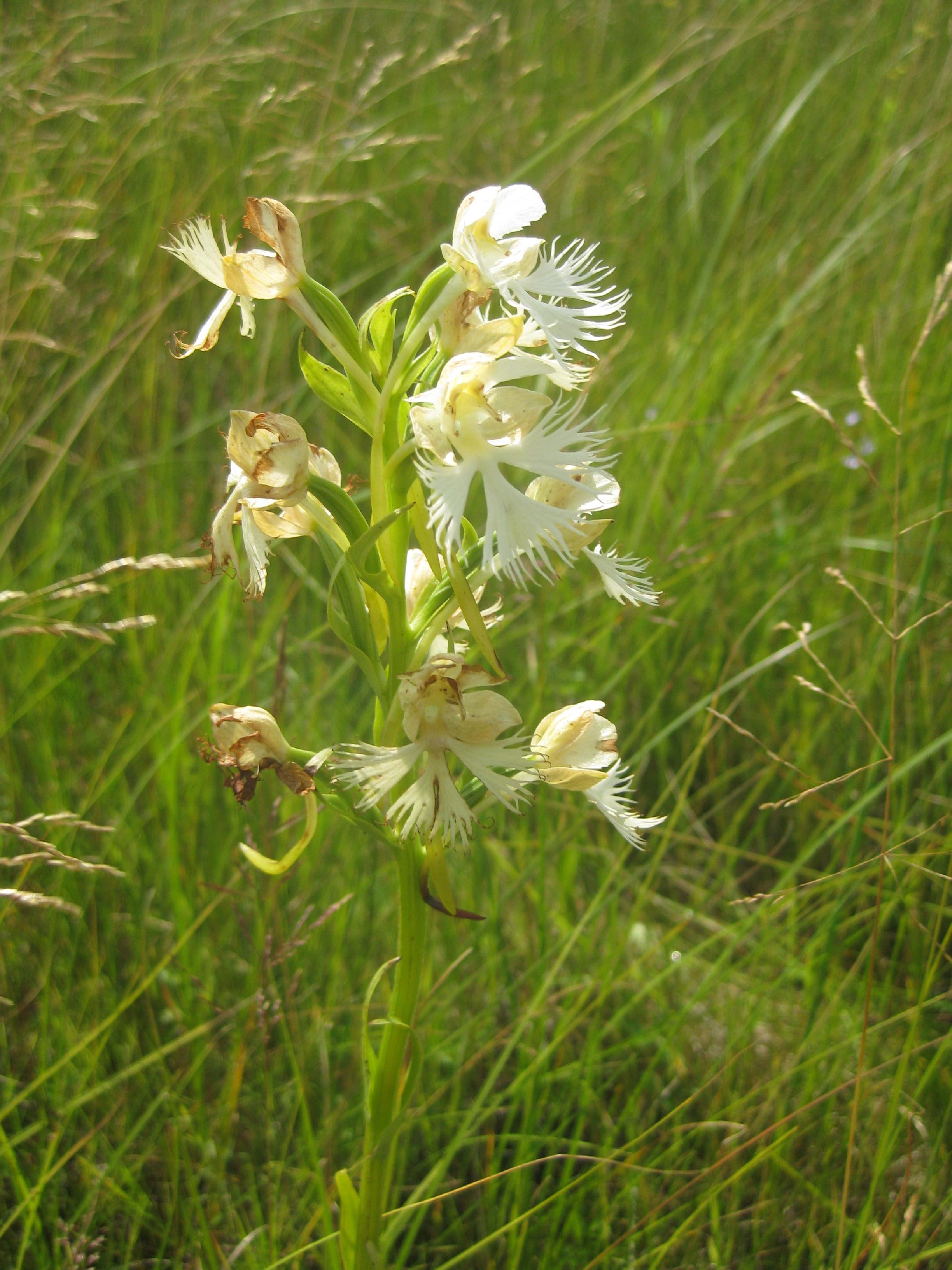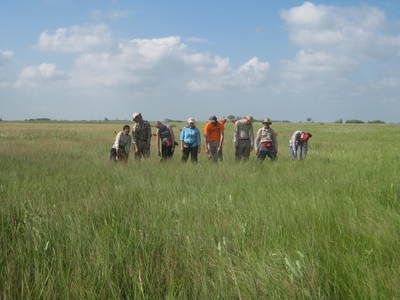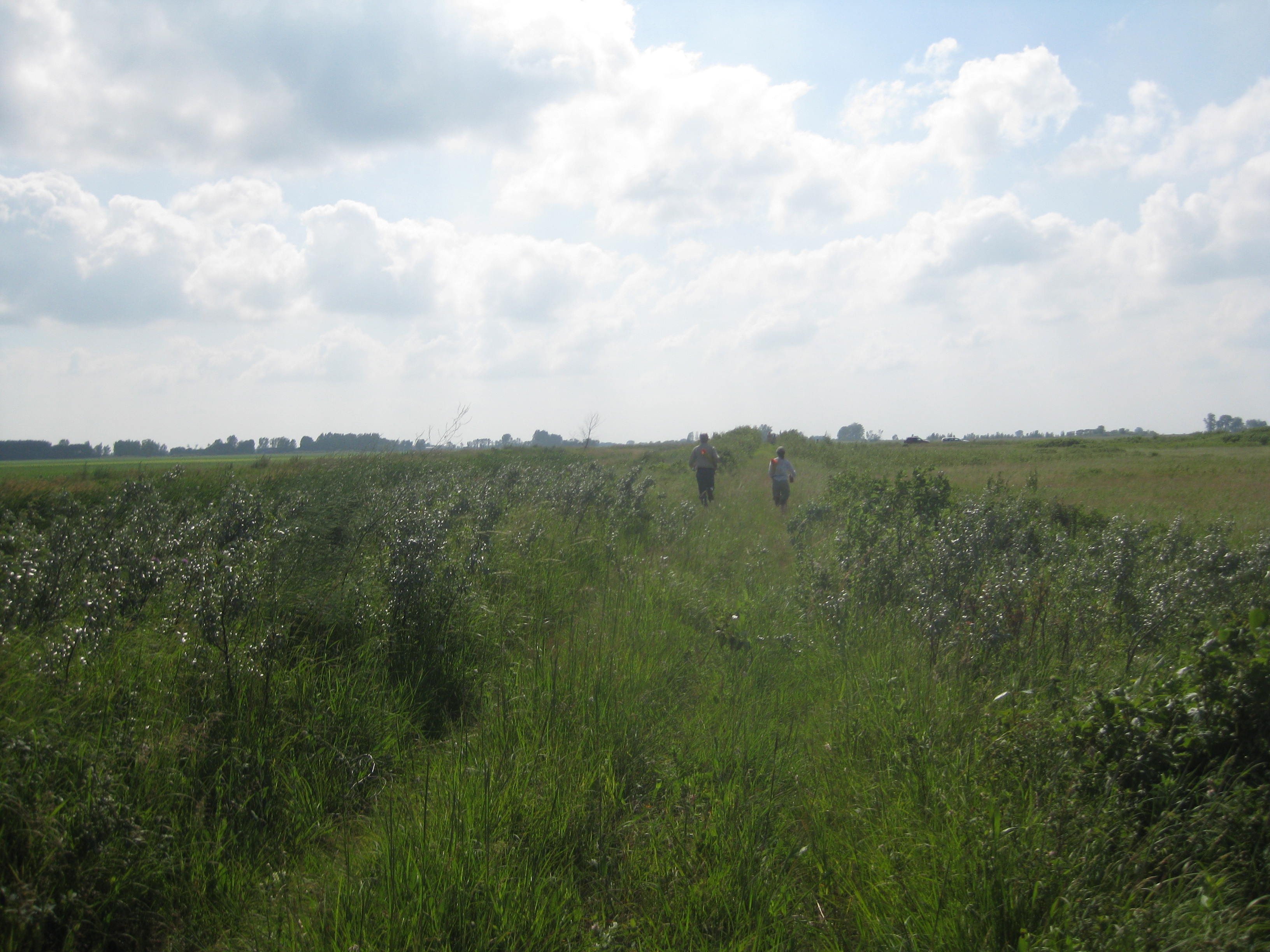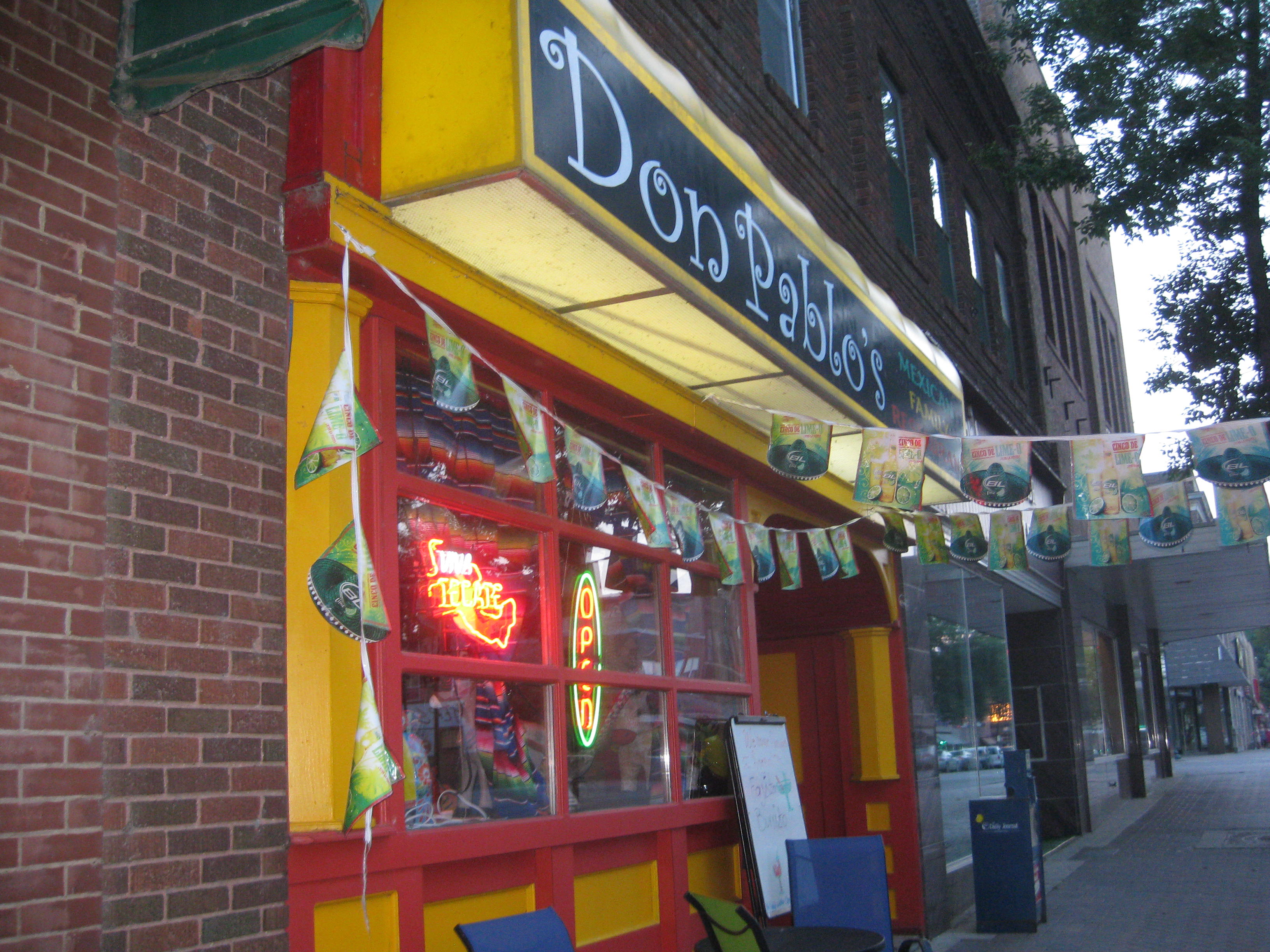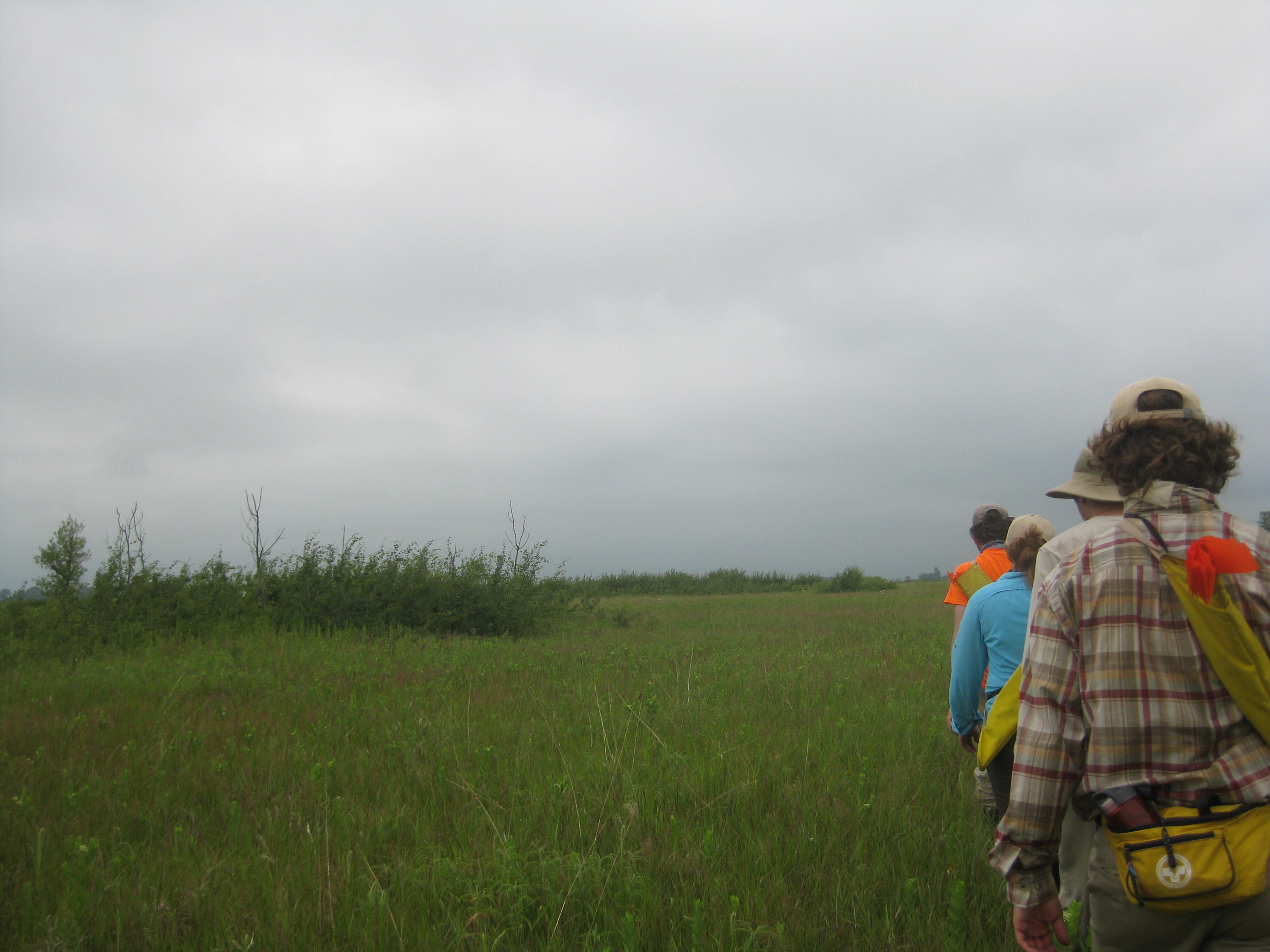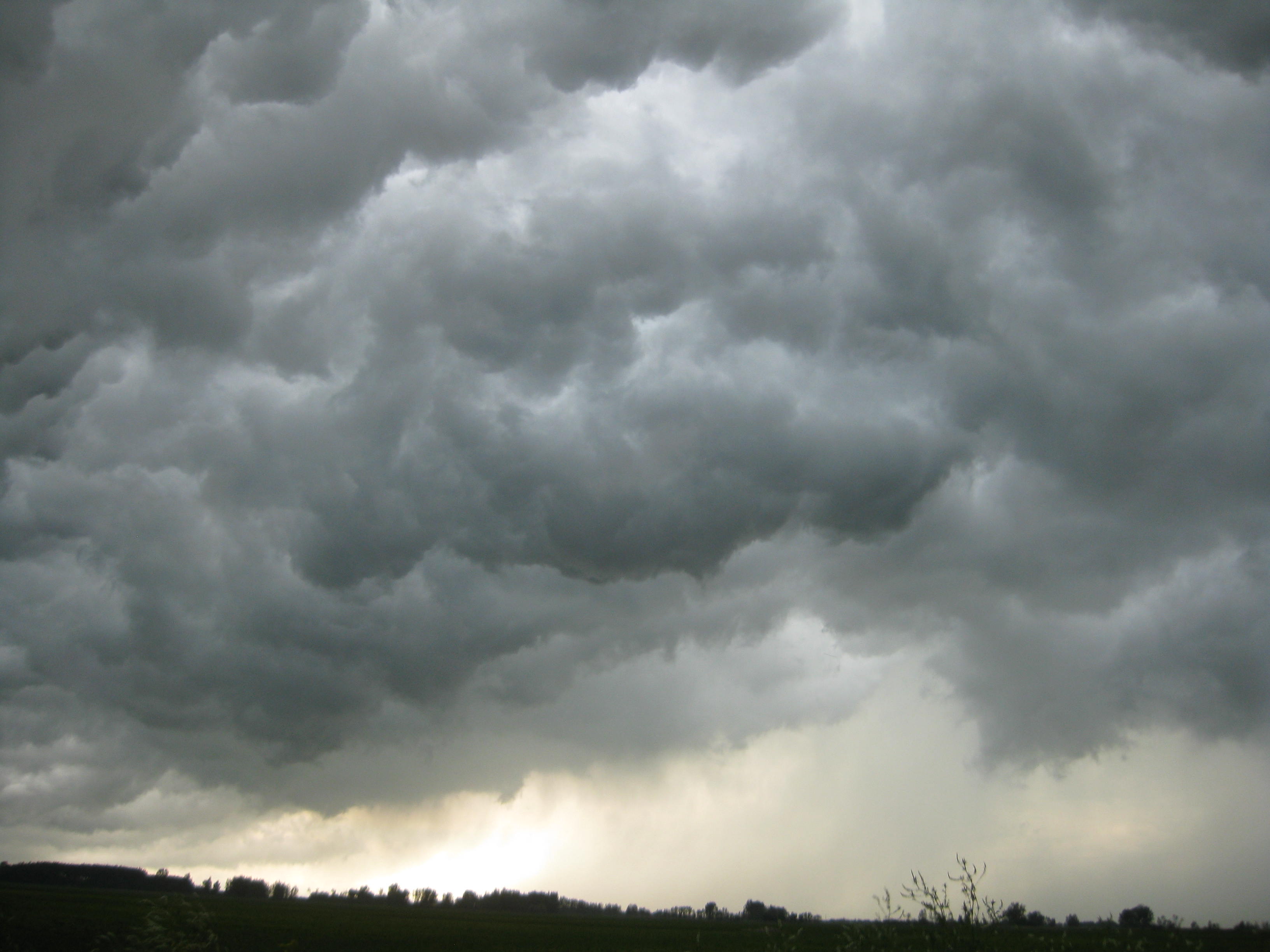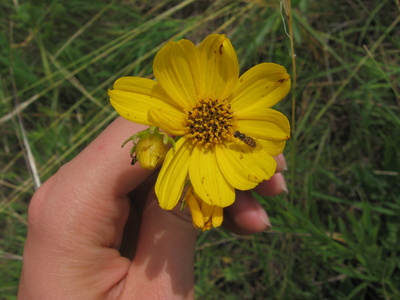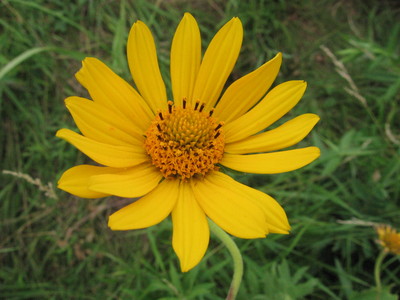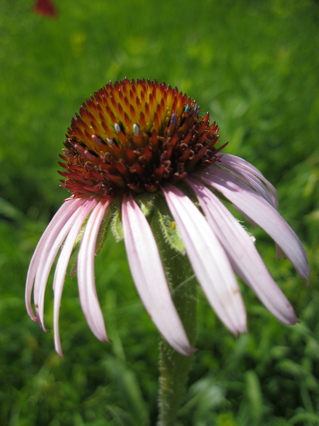|
|
Yesterday we went on a trip to the Crookston area to help Gretel with her White Fringed Orchid search. Here are pictures for your viewing pleasure 🙂
The day started off hot, but not excessively hot…..

Gretel and Stuart leading the pack.

Trekking into the prairie.

We worked in groups of three, with Gretel, Stuart, and Josh visoring in each group and the rest of us flagging and counting.
After working from 9+am to around 12.30pm, it was lunch time!

We proceeded to have lunch picnic style, but not for long – because a storm was headed our way!


We quickly headed back to the cars for safety, and watched the awesome storm while eating lunch. Fortunately the storm passed over quickly, and soon the skies were clear again.
Stuart contemplating the skies.

We went back to work in another section of the prairie for the rest of the afternoon.
Lee searching for orchids. ‘Where forth art thou, white orchid?’

And there you are! (usually right under my nose)

Around 4+, we finally finished searching the plots…we were quite exhausted by then…

but we were done…Victorious Team Echinacea!

The amazing couple who still had the energy to race back to the cars.

After that we drove back to Douglas County. Stopped at Fertile, MN for ice cream but sadly they were closed on Saturdays. Also found out that Cafe 116, the dinner place in Fergus Falls we were going to, closes at 6pm on Saturdays. So we had a pretty sumptuous dinner at Don Pablos, a quirky Mexican restaurant in Fergus Falls 🙂

Reached Hjelm House around 9 or 10pm. That was a long but fun day! 😀
This past week a lot more Echinacea started flowering, which meant we had plenty to do. We located all the Echinacea plants in the Common Garden that will flower this year. There were so many! They seemed to be particularly abundant in the 99 garden.
We also completed some more aphid surveys for Katherine’s project, continued work on the New Media Initiative, and set insect traps for Greg’s project. I really enjoyed taking a quick peek at some of the insects that Greg’s traps caught. I don’t have tons of experience with insects, so I don’t know what genus any of them are yet, but some of them looked pretty nifty. I’m looking forward to finding out more about them.
My own independent project is coming along as well. I’ve been spending quite a bit of time this week working at the dump! For those of you who aren’t familiar with the prairie remnants we’re studying, I should clarify that I’m not actually working in a garbage heap. There are some little hills that haven’t been used for agriculture because they are within the landfill’s property, but they’re not really close to all the trash either. As a result, they are covered in beautiful native prairie species! (And when the wind’s coming from the right direction, it doesn’t even smell bad!) Two of the species I’m studying grow there, Coreopsis palmata

and Heliopsis helianthoides.

I’ve started doing pollen crosses, with mixed results. On the Heliopsis, it looks like styles shrivel after receiving outcross pollen (suggesting they have been successfully fertilized), but not after receiving self pollen. I had a harder time seeing what happened to the styles on the Coreopsis I crossed because when I went back to check on them two days later, some of the flower heads had started falling apart. (As Amber Rae put it, “The Coreopsis are losing their heads!”) Stuart says that this is unusual though, so hopefully the heads I use for crosses this coming week won’t fall apart and I’ll be able to get some clearer results.
Uff da! I believe the first round of Dichanthelium seed collection is done. Thanks to Gretel and everyone who helped. And for all the times you waited for me after 5pm.
Collected seeds from 158 plants from 5 sites – Jul 7 Hegg Lake south of parking lot, Jul 8 near Hegg Lake PHEN plot, Jul 9 Hegg Lake field trip area, Jul 11 (yesterday) Loeffler’s Corner (west) and Staffanson’s (old field).
112 plants had spreading/expanded panicles (not sure what’s the correct term) and 47 were not spreading/erect.
Here’s the maternal lines data from the plants I sampled, if you’re interested:
Dichant_DE_All.xls
I’m planning to return to some of these plants a week (or perhaps a little earlier/later, depending on scheduling) after I first collected the seeds. Hopefully there’s still some seeds left on the culms for me to harvest!
July 14 update: It is actually 158 plants, not 159. Sorry for the arithmetic error! 😛
A quick list of flowering plants I noticed while assessing phenology in Jennifer’s experimental plot at Hegg Lake WMA on 10 July. I list only plants observed in the plot. Asclepias speciosa is flowering just outside the SE corner of the plot.
F = flowering
X = done flowering/in fruit
N = not yet
Heliopsis helianthoides F
Amorpha canescens N
Coreopsis palmata F
Rosa arkansana F
Anemone cylindrica X
Silene F
Asclepias syriaca F
Amphicarpea bracteata F
Morning glory sp F
Apocyanum F
Tragopogon F
Cirsium arvense F
Lathyrus venosus XF (almost all done flowering)
Galium boreale F
Psoralea argophylla F
Medicago sativa F
Linum sulcatum F
Carduus acanthoides F
Senecio X
Liatris N
Achillea F
Zizea X
Red field clover F
Yellow fl lactucid F
Potentiall arguta F
Desmodium F
Physalis F
Dichanthelium leibergii XF
No Phlox pilosa in the plot!
We found 147 flowering plants in Jennifer’s Phenology Experiment during a thorough, but not exhaustive, search on Friday. Most of these plants have buds only and will start shedding pollen later. I posted a map of locations of all plants to flower this year.
 Click on thumbnail to see a larger map. Click on thumbnail to see a larger map.
Jennifer planted this experiment to investigate heritability of flowering timing (phenology) in spring 2006.
Last year eight plants flowered and about 2700 plants were alive. Read about measuring last year.
Assuming that almost all of those plants are still alive and that we didn’t find all the flowering plants, then about 6% of surviving plants will flower this year (>147/2700).
For kicks, I made maps of the paths of data enterers. We usually worked in pairs and used one person’s PDA to enter data. Here are the paths…
Josh D’s visor, Amber E’s, Nicholas G’s visor, Gretel K’s visor, Lee R’s visor, Callin S’s, Stuart W’s visor, Maria W’s visor, Amber Z’s visor. For the record Katherine M’s visor had only one record and we didn’t use Karen T’s visor.
For Lee, I found that there is a good deal of Heli. heli at Aanenson – most bloomed the center head but not the sides.
For all, there wasn’t much Ech blooming at RRX, LC, RI, or YOH as I remember in years past.
For whomever is interested, west of YOH and not IN Douglas county but there is a good deal of Rudbeckia? – I was moving pretty fast and didn’t stop to look close – just a lot of yellow flowers!
I don’t know if matches up to the BOB MAHONEY RESTORATION, but its there to be seen.
Hi everyone, Maria here again. Today was a particularly happening day in my opinion. Everyone had something to do. Amber E. is back from Alaska with Ruth! Karen arrived from Evanston in the afternoon!
In the morning those of us who hadn’t finished our Stipa searches in the common garden finished that! (So Stipa is done! – we scaled back though and only searched for the 2011(?) cohort). After that Gretel, Ruth, Amber E and I put Position/Row signs in the common garden and made the signs face East/Westwards so now it’s so much easier to read the signs while you are walking in the common garden. Then we got started on looking at the phenology of Echinacea in the common garden. We systematically walked through each row, looking out for flowering Echinacea with emerged anthers and pollen, twist-tying the heads and recording them in our visors. Josh joined us when he finished his Stipa searches. We found quite a few flowering heads – bet there’ll be more soon.
While we were looking for flowering Echinacea, we saw Stuart, Callin, Amber Z and Nicholas crowded around ‘Joe’ – the pet name given to the prominently flowering Echinacea at row 28, position 860. As described by Callin in the previous post, they were practicing bract-painting for their independent projects on Joe.
When we finished looking at all the rows, it was time for lunch and short presentations of our projects. It was good to hear about everyone’s projects and talk about my own projects and get feedback. After lunch, we got started on our independent projects or worked on the New Media Initiative.
Gretel and I headed to Hegg Lake to look for Dichanthelium (Panic Grass) seeds for my second project. This summer I will be collecting seeds from Dichanthelium plants from different remnants, including Hegg Lake and Loettler’s Corner (I might not have spelt that right – sorry). My plan is to collect seeds from 30 individuals from each “site”, as there are several places at Hegg Lake that seem to have a lot of Dichanthelium. After collecting the seeds, I will be bringing them back to Chicago Botanic Garden and do more work on them in the fall/later.
Click here for the
Google doc of my summer project proposals
I am super super indebted/thankful/grateful for Gretel. Without her guidance, I’d probably be in a big mess/not knowing what to do/still be at Hegg Lake as this is my first time doing independent field work.
When we reached the place at Hegg Lake (it was near the road, area with ditch, south of the parking lot), a lot fo the Dichanthelium seeds had already fallen off the culms. It was quite disheartening. We walked a little north and found a patch of Dichanthelium with most of their seeds intact, then we laid out the tape measure for 20m in a roughly north-south direction (I kept thinking it was 2m while Gretel patiently corrected me ^^;;). Initial plan was to do every plant within arm’s length from transect, or every other plant if population was dense. However, that was not quite possible given the circumstances. After Gretel and I collected seed from the first plant and did all the measurements, she continued measuring/collecting while I picked ~30 plants near the transect (more than my arm’s length) that had at least one culm with 8 or more seeds to collect from and flagged them with a blank flag. I started measuring/collecting after I finished flagging. Around 4pm, Lee called – reinforcements were coming! Ruth and Lee arrived with Karen and they helped us finished the rest of the plants (by that time Gretel had completed 17 plants (!!) and I was on my 6th plant). It turned out that we had 31 flags so 31 envelopes with data and samples! We also collected some “random” samples – ie seeds from various random plants away from transect. Finished around 5pm – thanks to Gretel, Lee, Ruth and Karen! Really excited to get the first 30 done!
Take a look at the simple data entry for today’s collection for more technical details if you’re interested. I might also do the seed count for today’s samples just to see how many seeds we can get from 30 plants using the ‘8 or more’ rule. (I just need to be rreally careful not to lose any seed >.<)
Dichant_DE-HL1001-31.xlsx
We left 11 flags (labelled with sample number) at the site that we will return to later to collect more seeds from.
Now that I have more experience, I’ll definitely be more systematic+efficient about it.
Notes to self for tomorrow/next time:
– “just-in-case” extras (extra equipment, envelopes, pens, sharpies, flags) do come in handy! Meter sticks are probably more efficient than tape measures. More flags would be good. Maybe use a different color for “done” or for extras.
– Extra samples are good too. Maybe do 32 plants per site?
– Bring a plastic bag/something to put a plant specimen in – I need to get a sample of the other Dichanthelium species (“hairy leaved”) to press and identify.
– Equipment list would be useful esp when I have more than 5 things to remember.
Lesson of the Day: Having an experienced person around and helpers is always always always helpful! =D
Thanks again to Gretel and everyone who helped!
Amber Z, Callin, and Nicholas all practiced the bract-painting, pollen-collecting, and pollinating procedure in the common garden today (7 July, 2011). This Echinacea plant now has a nice makeover.
The plant is at row 28, position 860.

I wrote this up last week, but neglected to post it on the flog. Here is a detailed protocol for the 2011 recruitment searches. See Wagenius et al. 2011* for a description of the seedling recruitment study.
RecruitmentProtocol2011.doc
*Wagenius, S., A.B. Dykstra, C.E. Ridley, and R.G. Shaw. 2011. Seedling recruitment in the long-lived perennial, Echinacea angustifolia: A 10-year experiment. Restoration Ecology.
Hurrah hurrah!
The flog is back and running! All the links should be working and all pages formatted nicely now!
The credit goes to John, my friend from home, who has been troubleshooting and coming up with the solutions to the problems…..super super indebted to him 🙂
But the flog team is not totally done yet…now that our Twitter account is up, we’ll need to add a Twitter button on the flog. We’ll also continue to sort entries into categories. Also note the new description of the field log (credits to Lee)!
Comments on the flog are most welcome!
|
|


